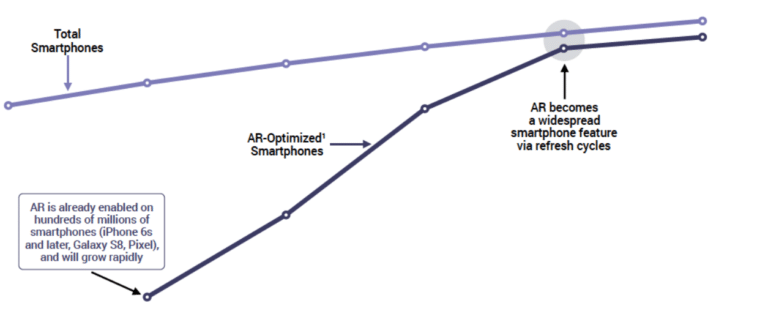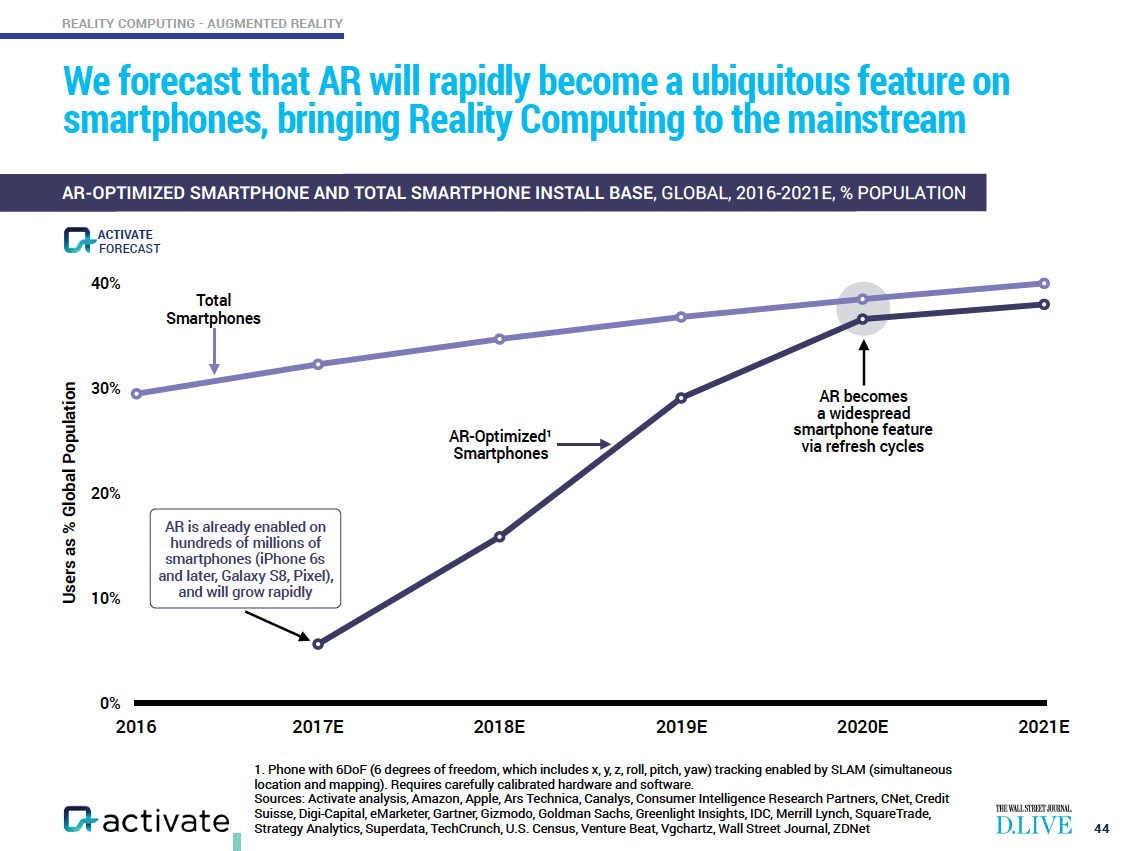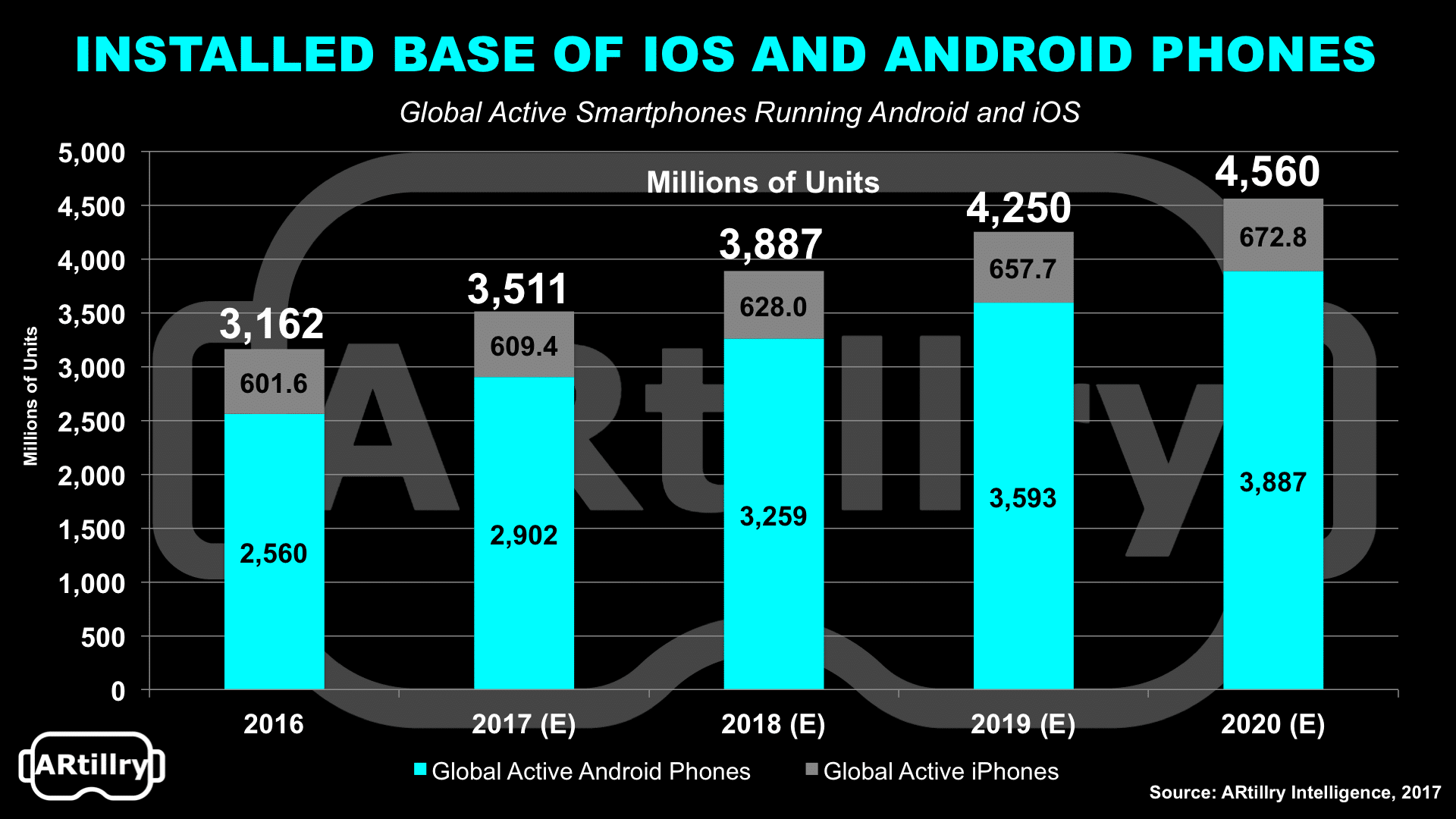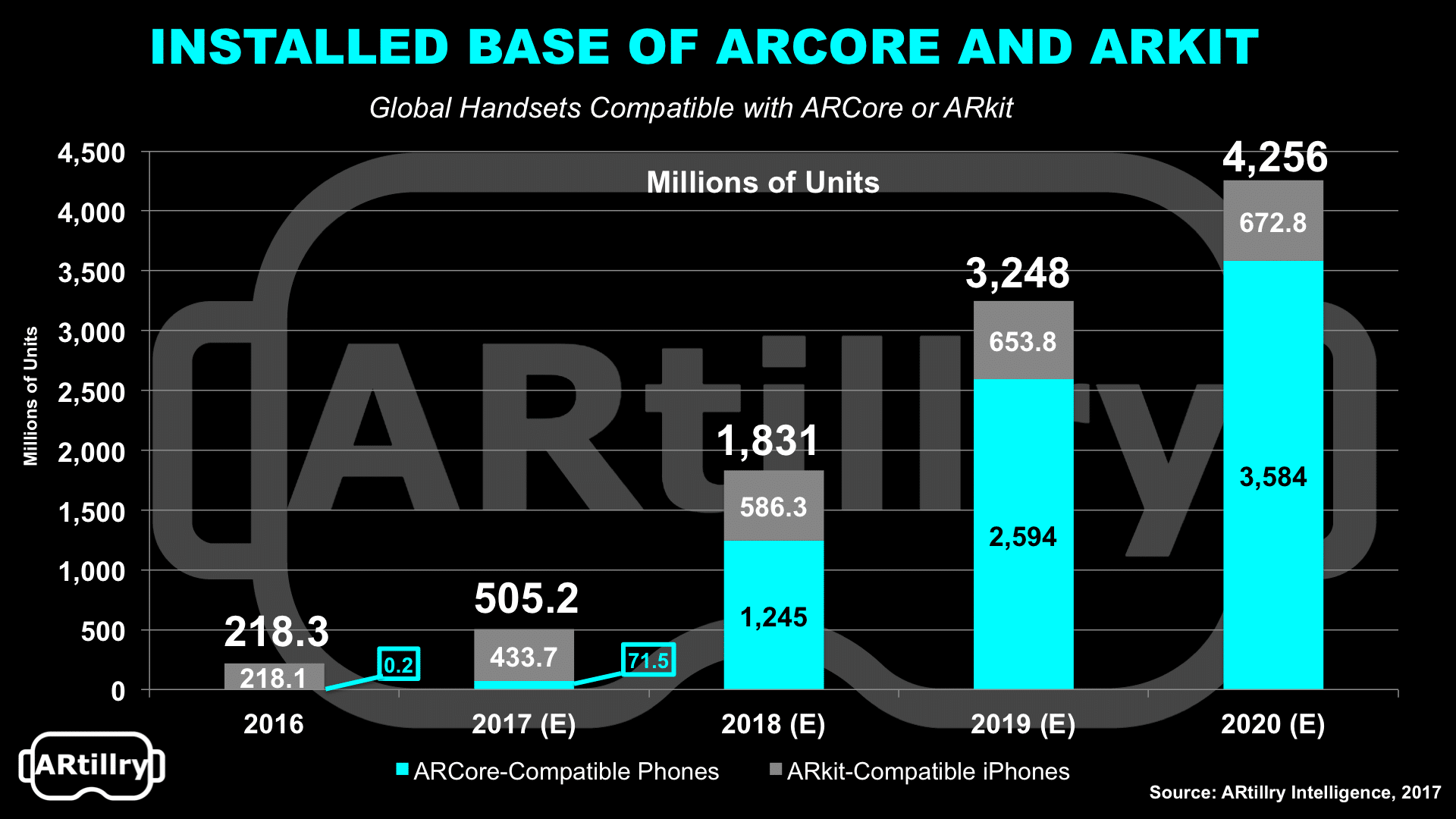
Mobile AR’s opportunity is its capacity for scale. There are 3.2 billion smartphones on the planet today, growing to 4.6 billion by 2020. Among those, half a billion are AR-compatible today, and 4.2 billion will be AR-compatible by 2020 (93 percent coverage).
Activate recently published data supporting this, showing that AR-compatibility will cycle into the smartphone universe over the next hardware replacement cycle (2.5 years on average). This will give us nearly 100 percent AR compatibility by 2020 (see chart below).
One thing that’s clear is Apple has the short-run reach advantage. This is due to a more unified hardware and software set that supports wider ARkit compatibility. But Google will have the longer-term scale as ARCore compatibility cycles into the larger Android universe.
That will take longer for ARCore, given a fragmented base of Android devices that makes it difficult for Google to mandate AR-capable optics, and to push software updates. In fact, only 16 percent of Android devices usually run OS versions released in the previous year.
Beyond OS, there are hardware specs, such as optics and sensor calibration. Currently the Pixel, Pixel 2 and Samsung Galaxy S8 are compatible with ARCore but we’ll see more OEMs comply over time, starting with Huawei, Asus and LG. For ARkit, iPhones 6s or later have the goods.
ARtillry’s forecasting involves a unit-penetration model based on cumulative smartphone sales that go back 10 quarters (average replacement cycle), while also factoring in AR compatibility. That means A9 chips (or greater) for ARkit, and Android 7.0 (or greater) for ARCore.
See the charts below for more, and a deeper dive on ARkit and ARCore growth dynamics here.



For a deeper dive on AR & VR insights, see ARtillry’s new intelligence subscription, and sign up for the free ARtillry Weekly newsletter.
Disclosure: ARtillry has no financial stake in the companies mentioned in this post, nor received payment for its production. Disclosure and ethics policy can be seen here.
